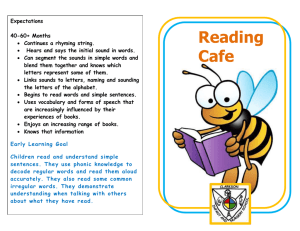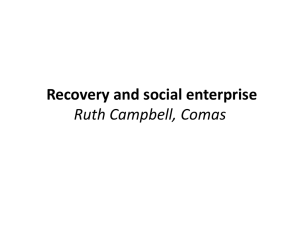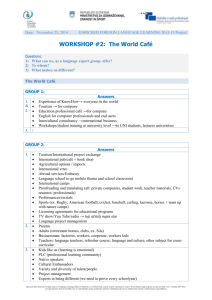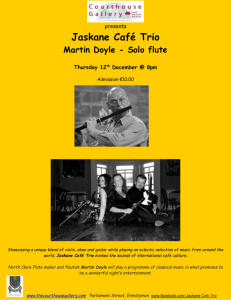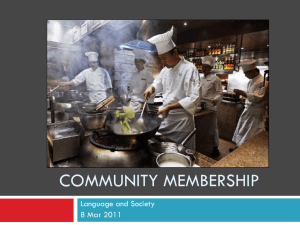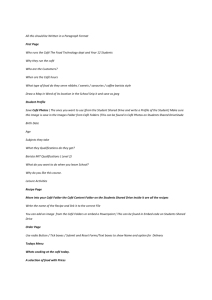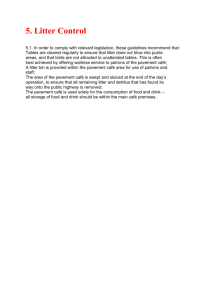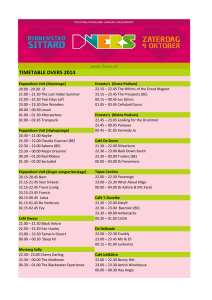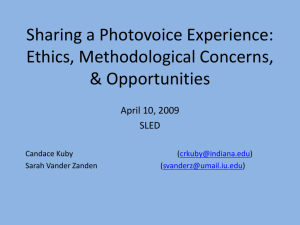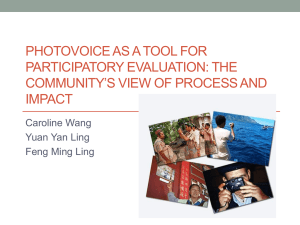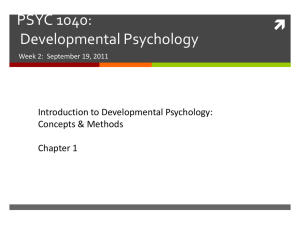Needs Assessment Methodologies
advertisement
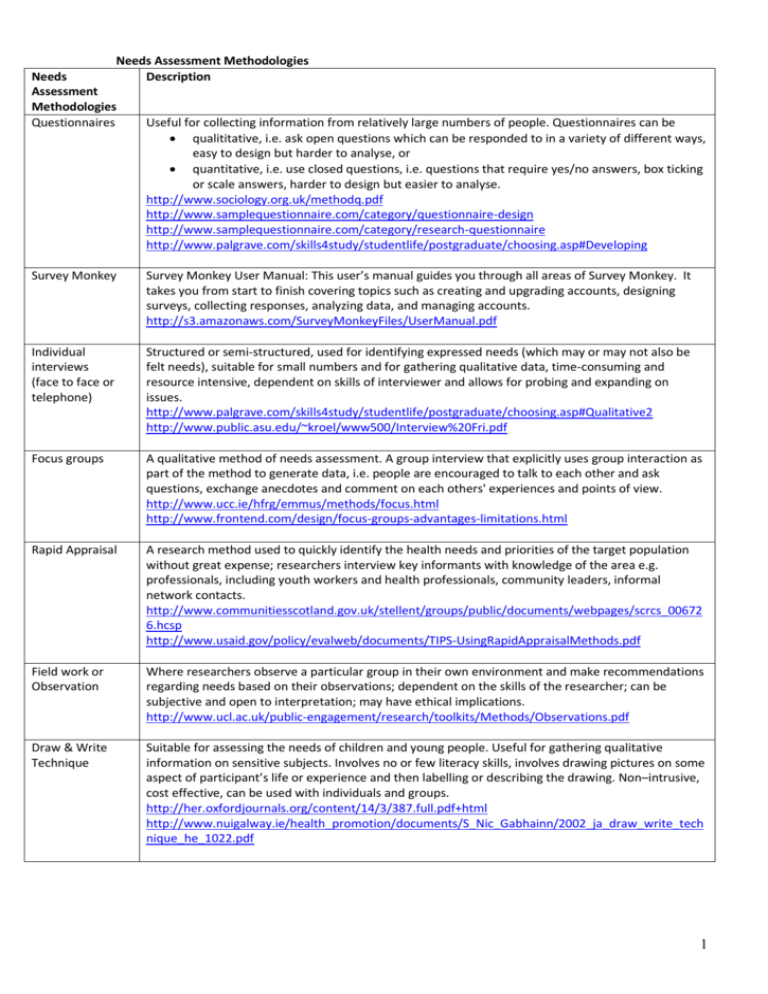
Needs Assessment Methodologies Description Needs Assessment Methodologies Questionnaires Useful for collecting information from relatively large numbers of people. Questionnaires can be qualititative, i.e. ask open questions which can be responded to in a variety of different ways, easy to design but harder to analyse, or quantitative, i.e. use closed questions, i.e. questions that require yes/no answers, box ticking or scale answers, harder to design but easier to analyse. http://www.sociology.org.uk/methodq.pdf http://www.samplequestionnaire.com/category/questionnaire-design http://www.samplequestionnaire.com/category/research-questionnaire http://www.palgrave.com/skills4study/studentlife/postgraduate/choosing.asp#Developing Survey Monkey Survey Monkey User Manual: This user’s manual guides you through all areas of Survey Monkey. It takes you from start to finish covering topics such as creating and upgrading accounts, designing surveys, collecting responses, analyzing data, and managing accounts. http://s3.amazonaws.com/SurveyMonkeyFiles/UserManual.pdf Individual interviews (face to face or telephone) Structured or semi-structured, used for identifying expressed needs (which may or may not also be felt needs), suitable for small numbers and for gathering qualitative data, time-consuming and resource intensive, dependent on skills of interviewer and allows for probing and expanding on issues. http://www.palgrave.com/skills4study/studentlife/postgraduate/choosing.asp#Qualitative2 http://www.public.asu.edu/~kroel/www500/Interview%20Fri.pdf Focus groups A qualitative method of needs assessment. A group interview that explicitly uses group interaction as part of the method to generate data, i.e. people are encouraged to talk to each other and ask questions, exchange anecdotes and comment on each others' experiences and points of view. http://www.ucc.ie/hfrg/emmus/methods/focus.html http://www.frontend.com/design/focus-groups-advantages-limitations.html Rapid Appraisal A research method used to quickly identify the health needs and priorities of the target population without great expense; researchers interview key informants with knowledge of the area e.g. professionals, including youth workers and health professionals, community leaders, informal network contacts. http://www.communitiesscotland.gov.uk/stellent/groups/public/documents/webpages/scrcs_00672 6.hcsp http://www.usaid.gov/policy/evalweb/documents/TIPS-UsingRapidAppraisalMethods.pdf Field work or Observation Where researchers observe a particular group in their own environment and make recommendations regarding needs based on their observations; dependent on the skills of the researcher; can be subjective and open to interpretation; may have ethical implications. http://www.ucl.ac.uk/public-engagement/research/toolkits/Methods/Observations.pdf Draw & Write Technique Suitable for assessing the needs of children and young people. Useful for gathering qualitative information on sensitive subjects. Involves no or few literacy skills, involves drawing pictures on some aspect of participant’s life or experience and then labelling or describing the drawing. Non–intrusive, cost effective, can be used with individuals and groups. http://her.oxfordjournals.org/content/14/3/387.full.pdf+html http://www.nuigalway.ie/health_promotion/documents/S_Nic_Gabhainn/2002_ja_draw_write_tech nique_he_1022.pdf 1 Needs Assessment Methodologies Open Space Technology Description Open Space Technology (OST) is an approach for hosting meetings, conferences, corporate-style retreats, and community summit events, focused on a specific and important purpose or task—but beginning without any formal agenda, beyond the overall purpose or theme. OST has been used in meetings of 5 to 2,100 people. The approach is characterized by few basic mechanisms: 1. 2. 3. 4. Graphic /Visual Harvesting or Recording a broad, open invitation that articulates the purpose of the meeting; participant chairs arranged in a circle; a "bulletin board" of issues and opportunities posted by participants; a "marketplace" with many breakout spaces that participants move freely between, learning and contributing as they "shop" for information and ideas; 5. a "breathing" or "pulsation" pattern of flow, between plenary and small-group breakout sessions. http://en.wikipedia.org/wiki/Open-space_technology#Self-organization http://www.openspaceworld.org/cgi/wiki.cgi?AboutOpenSpace http://www.co-intelligence.org/P-Openspace.html Graphic recording involves capturing on large-sized paper- in words, images and colour people’s ideas and expressions as they are being spoken in the moment. http://www.slideshare.net/IDEAIreland/idea-graphic-harvesting-training-2010 http://www.theworldcafe.com/pdfs/graphicBenefits.pdf Also see Mind Mapping http://www.mindtools.com/pages/article/newISS_01.htm World Café Methodology The World Café is a user-friendly method for creating meaningful and cooperative dialogue around questions that count. As an organizational or social design process the World Café offers a practical way to enhance the human capacity for collaborative thought. Born out of the worldwide interest in dialogue methodologies and readily applicable to organizations and communities, it catalyses dynamic conversations and opens new possibilities for action. In a World Café dialogue, small, intimate conversations link and build on each other as people move between groups, cross-pollinate ideas and make new connections around questions that really matter to their life, work, or community. As this living network of conversations evolves through several rounds of exploration, knowledge-sharing grows, a sense of the whole becomes more visible, and innovative possibilities evolve. Because of its unique structure, Café learning enables large groups, often hundreds of people, to think together creatively as part of a single, connected conversation. http://www.collectivewisdominitiative.org/papers/WorldCafe.pdf http://www.theworldcafe.com/method.html http://www.co-intelligence.org/P-worldcafe.html Photovoice Photovoice is a process in which people – usually those with limited power due to poverty, language barriers, race, class, ethnicity, gender, culture, or other circumstances – use video and/or photo images capture aspects of their environment and experiences and share them with others. The pictures can then be used, usually with captions composed by the photographers, to bring the realities of the photographers’ lives home to the public and policy makers and to spur change. Photovoice has three main goals: To help those who are often unheard gain a voice, enabling them to record and reflect on their experiences and their communities’ conditions, both positive and negative. To encourage critical consciousness. Through choosing, discussing, and reflecting on the subjects of their photographs, the photographers can come to a clearer understanding of their circumstances and the economic, social, psychological, and political forces that shape them. To bring about change that will improve conditions and enhance lives by reaching and influencing policy makers. http://ctb.ku.edu/en/tablecontents/chapter3_section20_main.aspx 2 3
